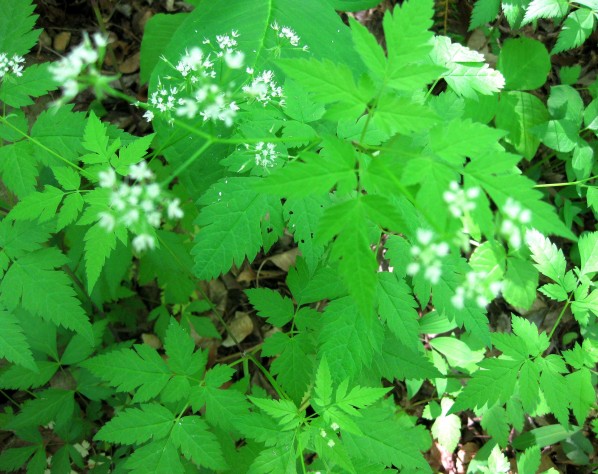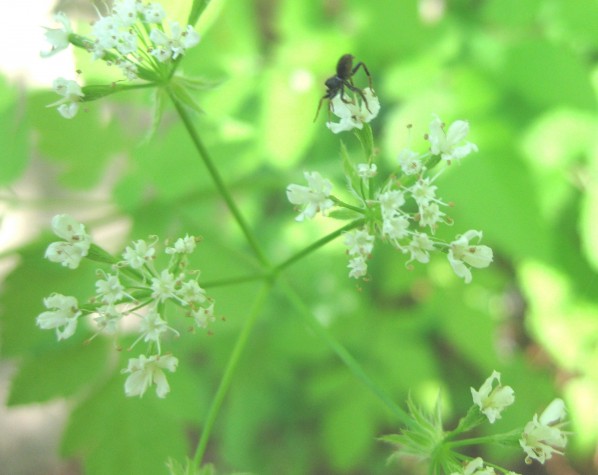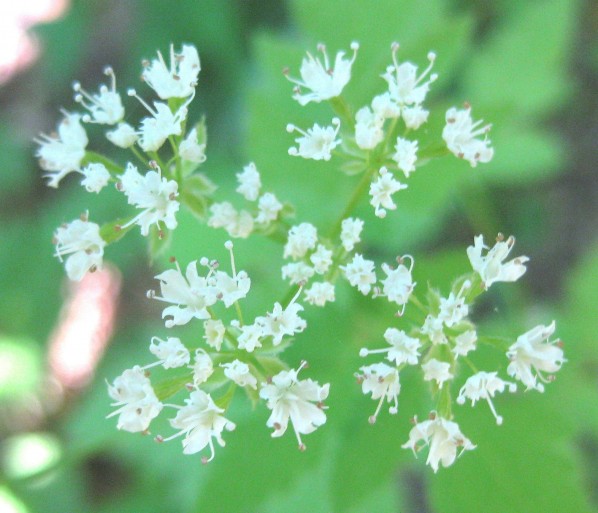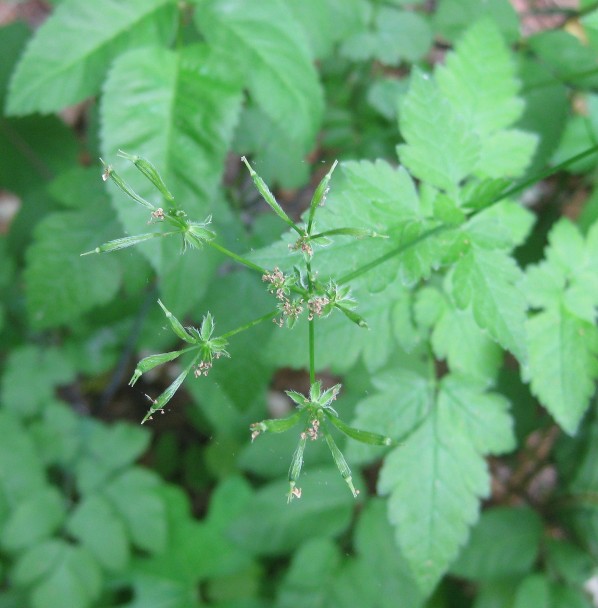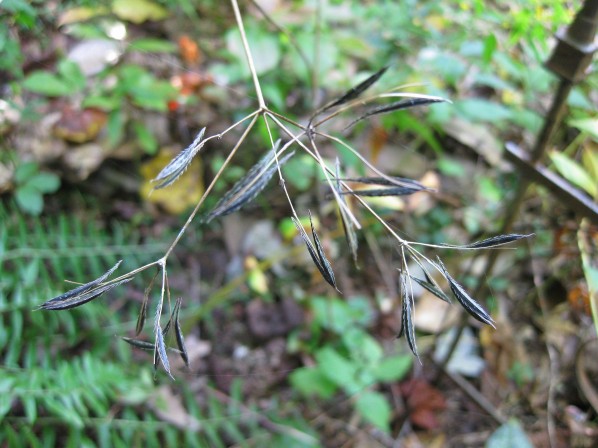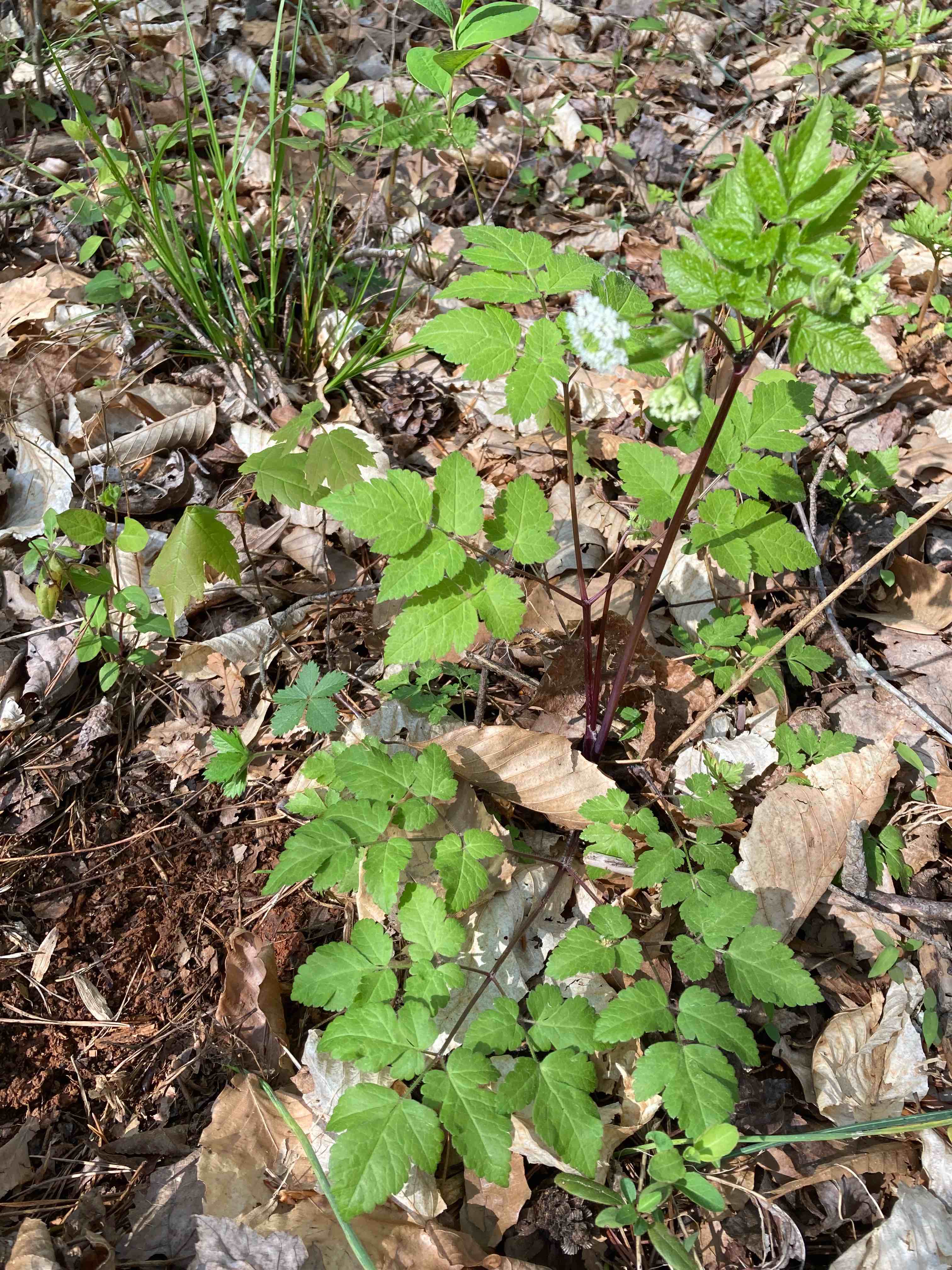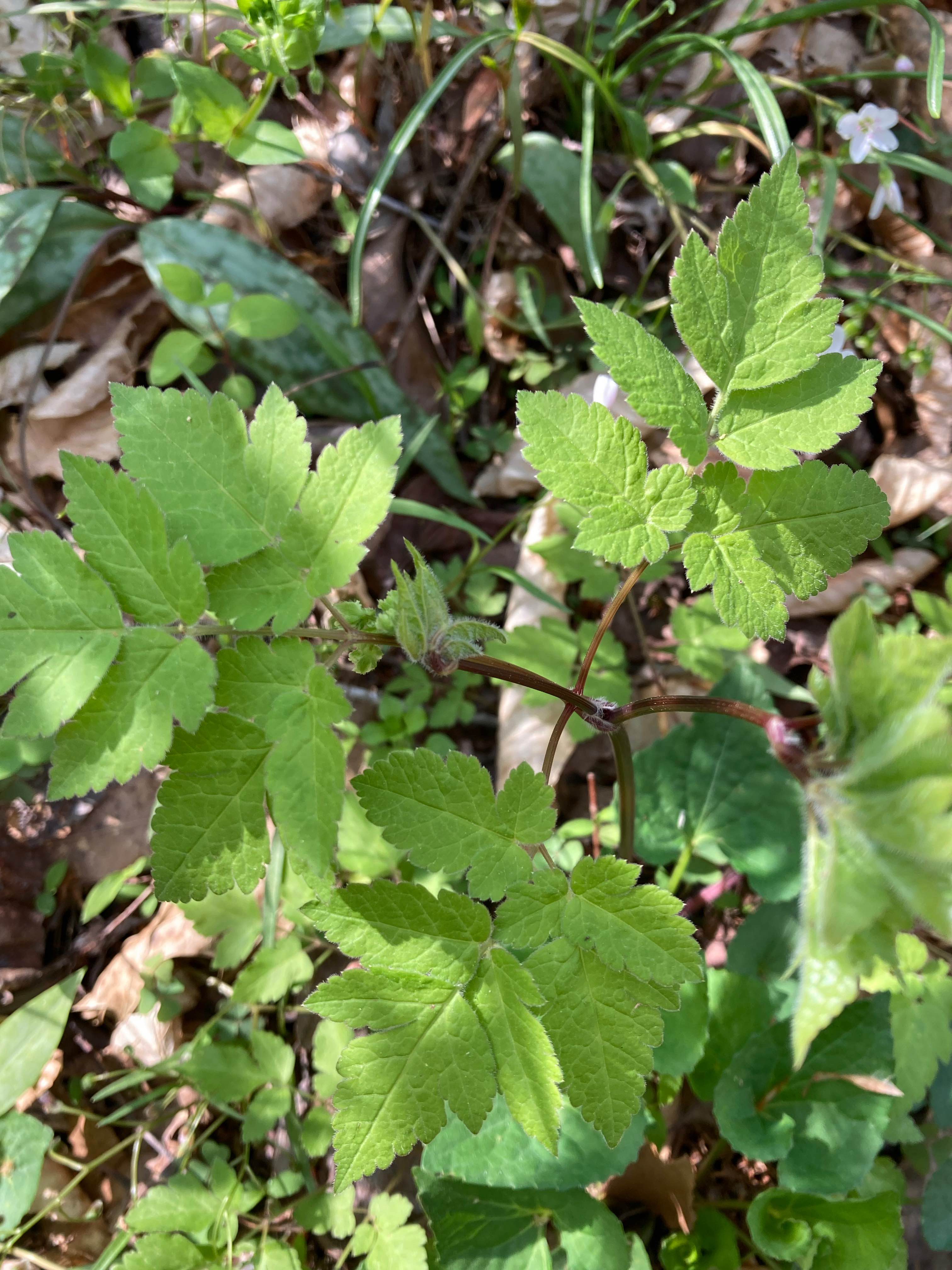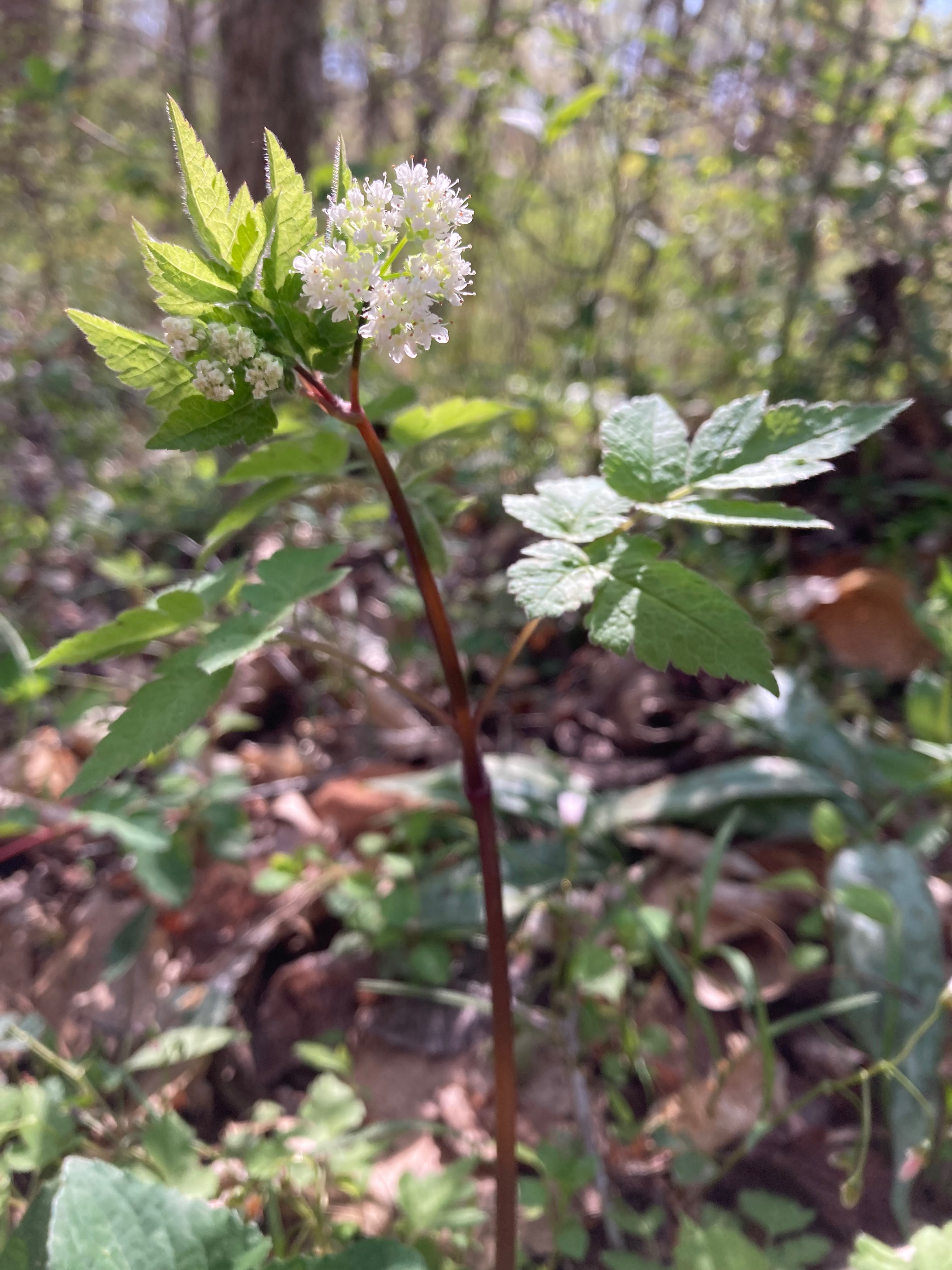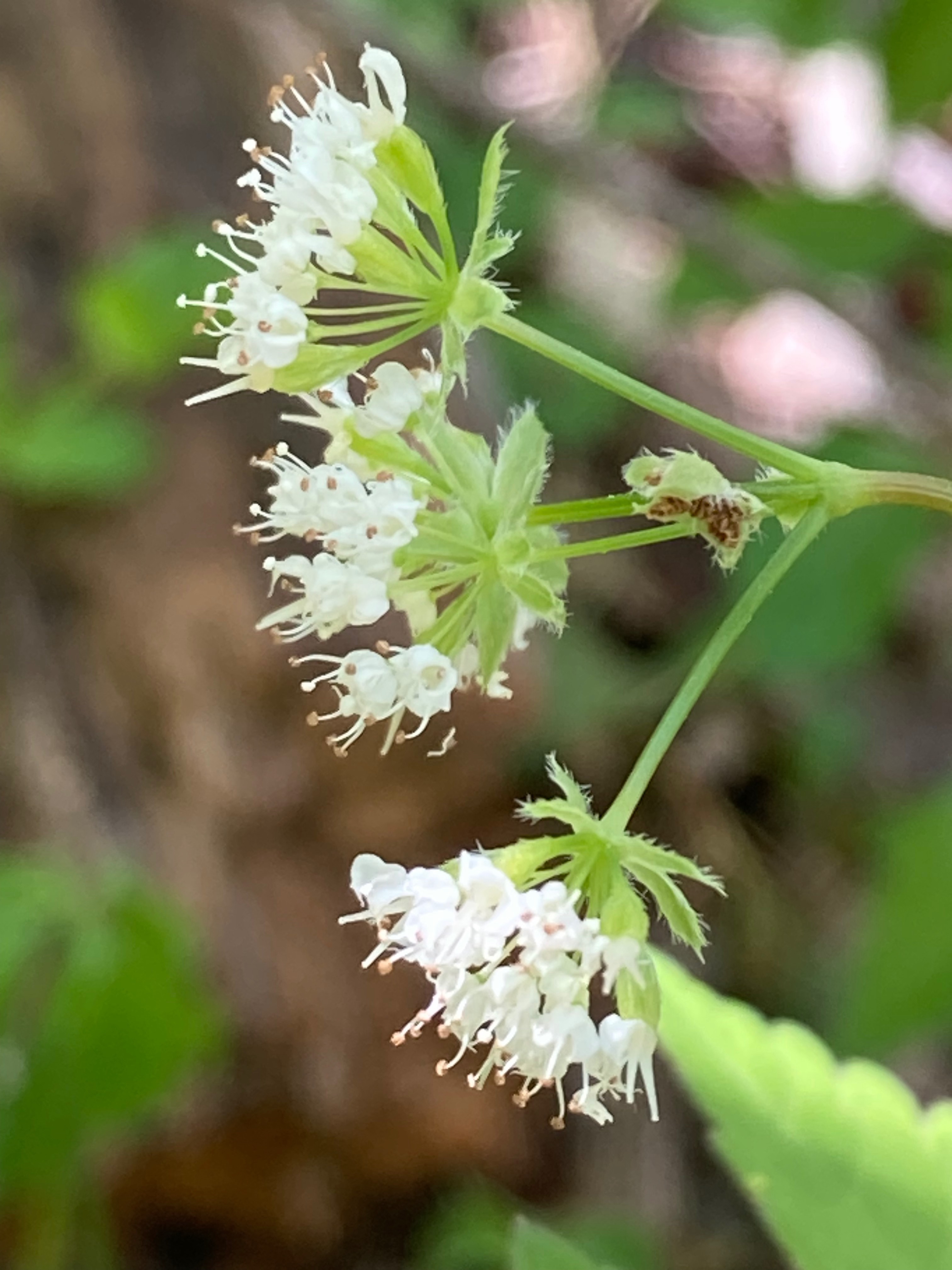NC Native Plant Society:
Plant Details
Osmorhiza longistylis
Anise-root, Sweet Cicely, Smooth Sweet Cicely, Longstyle Sweetroot, Licorice Root, Wild Anise
Scientific Name: |
Osmorhiza longistylis |
|---|---|
Genus: |
Osmorhiza |
Species Epithet: |
longistylis |
Common Name: |
Anise-root, Sweet Cicely, Smooth Sweet Cicely, Longstyle Sweetroot, Licorice Root, Wild Anise |
Plant Type |
Herb/Wildflower |
Life Cycle |
Perennial |
Plant Family |
Apiaceae (Carrot Family) |
Native/Alien: |
NC Native |
Size: |
1-3 ft. |
Bloom Color(s): |
White |
Light: |
Sun - 6 or more hours of sun per day, Part Shade - 2 to 6 hours of sun per day |
Soil Moisture: |
Moist |
Bloom Time: |
April, May |
Growing Area: |
Mountains, Piedmont, Coastal Plain |
Habitat Description: |
Moist, fertile forests (Weakley 2015). Common in Mountains and Piedmont, rare in Coastal Plain. |
Leaf Retention: |
Deciduous |
Leaf Type: |
Leaves veined, not needle-like or scale-like |
Leaf Form: |
Compound |
Life Cycle: |
Perennial |
Wildlife Value: |
Has some wildlife value |
Landscape Value: |
Suitable for home landscapes |
State Rank: |
S4: Apparently secure, S?: Uncertain (*Key) |
Global Rank: |
G5 - Secure (*Key) |
Notes: |
Some folks say that they seed about too much. They are easy to pull up but I have not had the problem because I eat most of the seeds. |
|
Plant Tom Harville |
|
|
Blooms Tom Harville |
|
|
Blooms Close Up Tom Harville You can see here how the name longistylis came about. |
|
|
Green Seeds Tom Harville This is the stage that I think the seeds taste the best. They are sweet with a hint of anise flavor. They get too bitter to me as they age. |
|
|
Mature Seeds Tom Harville These seeds will stick to your clothes or hair to move about. Reminds me of spanish needles. |
|
|
This perennial plant- native to rich, moist woods- grows to about 1-3 ft tall. Seven Mile Creek Natural Area, Orange Co., NC
Bettina Darveaux |
|
|
Compound leaves are triangular in shape, alternate on the stem, and bipinnately to tripinnately divided with serrated margins. Seven Mile Creek Natural Area, Orange Co., NC
Bettina Darveaux |
|
|
The flowers occur at the tip of the stems and are in compound umbels. Seven Mile Creek Natural Area, Orange Co., NC
Bettina Darveaux |
|
|
Each umbel is made up of about 4-6 umbellets, with each umbellet having 8-16 tiny white, 5-petaled flowers. Seven Mile Creek Natural Area, Orange Co., NC
Bettina Darveaux |
|
|
The 2 white styles exceed the length of the petals. This characteristic is used to distinguish this species from the similar Osmorhiza claytonii. Seven Mile Creek Natural Area, Orange Co., NC
Bettina Darveaux |
|
Links: |
|
back to top
go to plant details search
go to plant images search
go to gallery home
back to Initial o Gallery
back to orchids
back to Carnivorous Plants
back to Trilliums

